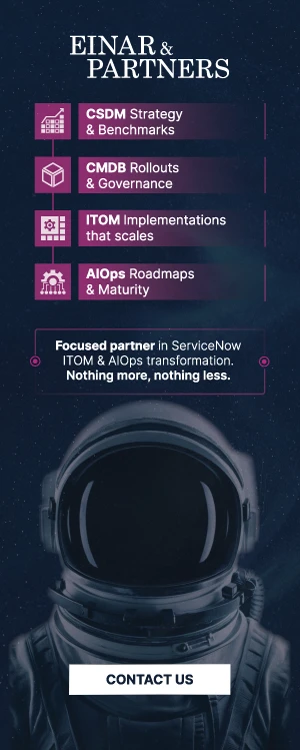
For those who missed our recent CSDM masterclass or want a quick recap, we’ve put together a summary of the key insights shared during the session. We discussed the current trends, challenges, and best practices in implementing the Common Service Data Model (CSDM) using ServiceNow. Whether you’re already familiar with CSDM or just getting started, this overview will give you a solid understanding of what was covered.
The Current Landscape of CSDM
CSDM is a hot topic in IT roadmaps, especially within organizations using ServiceNow. The industry is evolving rapidly, with significant strides being made in application and technical services. Nearly 90% of organizations are now actively working on application services, a massive leap from previous years. Technical services are also seeing a big push, with organizations beginning to grasp the importance of these once-blurry concepts.
Interestingly, while business services remain vital, their development has plateaued. This isn’t necessarily bad—it reflects that many organizations have laid a solid foundation and are now focusing on refining and optimizing rather than expanding new layers.
Tailored Approaches and Maturity Stages
One of the key takeaways from our research is that organizations don’t always follow the ServiceNow-prescribed crawl, walk, run, fly stages to the letter. Instead, they tailor their approach based on specific needs, which is both practical and effective. After reaching a basic maturity level, many organizations target specific areas of the CSDM model that align with their immediate goals rather than following a strict linear progression.
The Importance of Offerings
We found that offerings—what you provide as a service—are often misunderstood and underutilized. This can lead to organizations reinventing the wheel, creating functionality that already exists within ServiceNow but isn’t being leveraged properly. It’s crucial to understand offerings correctly to avoid unnecessary complexity and to stay compliant with out-of-the-box solutions.
Governance Models: Centralized vs. Decentralized
A significant part of the discussion focused on governance models for CSDM implementation. We compared two primary approaches:
- Centralized Model: A core team manages CSDM, with limited but focused input from service owners. This model is quicker and requires less organizational involvement, making it suitable for teams with constrained time.
- Decentralized Model: Service owners are deeply involved, building and maintaining their services. This approach fosters a stronger sense of ownership but takes more time and resources.
Choosing the right model depends on your organization’s needs, but understanding where you stand is critical for successful implementation.
Engaging Stakeholders and Maintaining Momentum
Getting stakeholders on board is crucial. Start with a compelling story that showcases the real-world benefits of CSDM, like how it helped one organization eliminate P1 incidents by reprioritizing proactive tasks. Keep the messaging clear and consistent—don’t overcomplicate with jargon or unnecessary customization. Finally, involve stakeholders in practical, hands-on workshops that allow them to see the immediate value of CSDM in their day-to-day operations.
Measuring Success and Expanding CSDM’s Reach
As you implement CSDM, don’t forget to measure its impact. Define KPIs around process improvements like mean time to resolve (MTTR) and reassignment counts. These metrics help demonstrate the value of CSDM and ensure continued support from stakeholders.
Governance is another critical area. Keeping data quality high and involving service owners in ongoing maintenance is essential to avoid having to restart from scratch in the future. Also, consider how CSDM can extend beyond IT operations into areas like Governance, Risk, and Compliance (GRC) or enterprise architecture—there’s a lot of untapped potential here.
Final Thoughts: Is CSDM Worth It?
Despite the challenges, our research shows that organizations overwhelmingly find CSDM worth the effort. The key is to understand the concepts, communicate the value clearly, and involve the right people at the right time.
We hope this post has given you a clear and practical overview of the key points from our CSDM masterclass. Stay tuned for more insights and reports that will help guide you on your CSDM journey.








